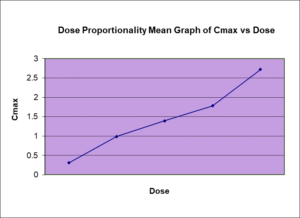Exploring Clinical Trial Protocol Deviation: A Comprehensive Guide

Clinical study protocols are conducted according to the International Council for Harmonization guidance on Good Clinical Practice (GCP) which outlines safeguards for the rights, safety and well-being of participants. Protocols “should [also] be designed, conducted and analyzed according to sound scientific principles to achieve their objectives; and should be reported appropriately” If conducted as designed, the data produced should be reliable and reproducible, supporting a clear interpretation of results while protecting participants. It seems intuitive that deviations to the protocol could negatively impact the participant or interpretability of the data and should be avoided.
Nonetheless, despite efforts to minimize them, protocol deviations (PDs) do occur. They do not all have the same impact and the importance of the deviation needs to be assessed. Examples of important PDs, defined as those with the most impact, were provided in ICH E3 in 1996. A formal definition and additional examples were provided in ICH E3 Q&A R1 in 2012 defines a Protocol Deviation as “…any change, divergence, or departure from the study design or procedures defined in the protocol.” This definition is often over-interpreted leading to inclusion of a wide scope of items such as theoretical situations, and situations which are not protocol deviations.
A written protocol is at the heart of every scientific investigation including in the context of clinical trials. Deviations from the directions given in the protocol, whether intentional or unintentional, isolated or systematic, big or small affect the strength of the results and possibly the safety of participants. It is therefore natural that tracking, recording, reporting and remediating to Protocol Deviations is a major concern in clinical development.
Definitions of Clinical Trial Protocol Deviation
Once a protocol deviation is identified, it can then be categorized as important or non-important. Risk-based approaches from ICH E6 R2 can be applied to the definition of important Protocol Deviations. The updated definition becomes:
“Important protocol deviations are a subset of protocol deviations that may significantly impact the completeness, accuracy, and/or reliability of key study data or that may significantly affect a subject’s rights, safety, or well-being. For example, important protocol deviations may include enrolling subjects in violation of key eligibility criteria or failing to collect data necessary to interpret primary endpoints, as this may compromise the scientific value of the trial.”
ICH E3 Q&A R1 indicates sponsors have some flexibility in determining what is an important protocol deviation, stating the “definition of important PDs for a particular trial is determined in part by study design, the critical procedures, study data, subject protections described in the protocol, and the planned analyses of study data.”
Clincial trial protocol deviations are relatively poorly defined in regulations and guidelines and different terms are often used interchangeably throughout publications, SOPs and sponsor-specific references. In addition, while the classification as major or minor is usually accepted, other classifications have been suggested to better capture the impact of deviations.
The purpose of IRB review is to assure, both in advance and by periodic review, that appropriate steps are taken to protect the rights and welfare of humans participating as subjects in the research. To accomplish this purpose, IRBs use a group process to review research protocols and related materials (e.g., informed consent documents and investigator brochures) to ensure protection of the rights and welfare of human subjects of research
What is Study Noncompliance?
Noncompliance: Failure to comply with the requirements of an applicable law, regulation, or institutional policy pertaining to the protection of human subjects, and/or with the requirements or determinations of an IRB. NOTE: It is not noncompliance when there is a need to deviate from the approved protocol or continue aspects of the research after expiration of approval in order to protect the welfare of research participants. However, these occurrences must also be reported to the IRB as protocol deviations. Also, departure from the protocol that is due to a study participant’s non-adherence is not considered to be a protocol deviation, but may need to be reported as an unanticipated problem
Examples of noncompliance include beginning a research project without first receiving IRB approval, enrolling more participants than the IRB has approved, or not submitting a continuing review on time.
Serious Noncompliance is defined as noncompliance that, in the judgment of the convened IRB, creates an increase in risks to subjects, adversely affects the rights, welfare, or safety of subjects, or adversely affects the scientific integrity of the study. Willful violation of policies and/or federal regulations may also constitute serious noncompliance.
Continuing Noncompliance is defined as a pattern of noncompliance that, in the judgment of the convened IRB, suggests a likelihood that instances of noncompliance will continue unless the IRB or institution intervenes.
Corrective And Preventive Actions (CAPA)
The Investigational Site and/or the Sponsor may need to initiate a series of actions to correct the effects of the PD and prevent any further repeats. These are called CAPA and are typically recorded in a dedicated quality software or ledger as part of the Quality System.
The following list is provided for illustration purposes only and is not meant to be exhaustive:
- enrolling a participant who did not meet all the inclusion/exclusion criteria;
- failing to obtain or document informed consent as approved by the IRB prior to initiation of study procedures;
- performing a study procedure not approved by the IRB;
- failing to perform a required lab test;
- dispensing or dosing error for study medication/drug;
- conducting a study visit outside of the required timeframe;
- failing to report unanticipated problems involving risks to participants or others to the IRB and sponsor (if applicable);
- failing to follow safety monitoring plan;
- implementing unapproved recruitment procedures;
- allowing an unauthorized person to obtain informed consent;
- failing to provide participant with a copy of the consent form;
- exceeding approved enrollment numbers.
Protocol Deviation Types:
Planned deviation: Planned deviations are anticipated and approved in advance, typically due to a temporary change in processes or procedures. They’re controlled and documented to ensure that product quality and safety are maintained.
Any planned departure from an approved protocol, SOP, or study specific manual/directive, or bioanalytical study plan with the intention to enhance the integrity of the study or the safety of the study participants. For example, and not limited to, an urgent implementation of a required process due to the study specific plan or immediate change required before SOP revision, for subject safety reasons such as:
- To prevent dosing error, Investigational Product Release and Administration Log is modified to enhance the verification process.
- Sponsor requested the addition of heart rate and blood pressure at the 48- and 72-hour timepoints for additional safety monitoring.
- As agreed with the sponsor and relevant parties, the end of study evaluation routine test panel inclusion of extra clinical lab test, specifically albumin, chloride, CK, LDH, and protein.
Planned Protocol deviations require both Investigator’s and Sponsor’s agreement (and IRB approval, if it is related to safety). Designated staff will contact the involved parties, and their written agreement/communication will be attached to the deviation report and will also be maintained in the regulatory binder.
Unplanned deviation: Unplanned deviations occur unexpectedly and without prior notice or intention. They can arise from various sources, including equipment malfunctions, human errors, or unforeseen circumstances. These deviations must be promptly identified, documented, and investigated to determine their impact on product quality and safety and to implement appropriate corrective and preventive actions.
An incident that is an unplanned or uncontrolled event in the form of non-compliance to the predefined procedures or requirement of an approved protocol, SOP, study specific manual, bioanalytical study plan, or any other applicable regulatory documentations.
Where Do GCP Compliance Issues Fit In?
Because clinical studies are conducted according to ICH GCP, and protocols make direct reference to GCP, some have assumed that all GCP compliance issues are also protocol deviations, thus inflating the volume of events. For example, a missing signature on the Delegation of Authority log needs to be addressed – perhaps as an action item if not completed during the CRA visit. In most cases, this granular procedure is not written in the protocol and thus this is not a PD.
To reduce the noise generated by this volume of events, we propose to address GCP issues outside the protocol deviation process unless they meet the classification of important as outlined via the Protocol Deviation Decision Tree. This will leverage the use of risk-based and issue management approaches, to identify the subset of GCP issues that are important protocol deviations. Examples of GCP compliance issues which may also be important protocol deviations include:
- Study participant received expired investigational product
- Key or critical study procedures performed by study site staff without the appropriate qualifications or training.
Deviation Reporting in the Clinical Study Report
There should be clear, documented roles and responsibilities established for all of the following duties within the deviation management process:
Identification of deviations — Special personnel should be assigned to monitor processes and identify deviations when they occur. These individuals should be trained to recognize potential deviations and understand the importance of timely reporting.
Deviation reporting — Individuals should be designated as responsible for reporting deviations promptly, using the appropriate channels or tools. This includes ensuring that deviations are documented according to the established SOPs and escalating issues when necessary. Write detailed deviation descriptions. When reporting a deviation, include detailed information like the observer’s name, time of observation, initial reaction, potential causes, and details of the deviated procedure or standard. For example, a deviation report might include:
Investigation — Personnel with the appropriate expertise and experience to investigate deviations should be designated to determine their root causes and assess their impact on product quality and safety. These individuals should be trained in root cause analysis techniques and familiar with relevant regulations and guidelines.
Adopt a risk-based approach. Categorize deviations according to their effect on the product quality into four categories – Incident, Minor, Major, and Critical. This helps prioritize responses if such prioritization is needed. Here’s a simple starting point from which to build out your categorization framework:
Minor: A finding/observation that has a relatively low probability of affecting the safety of the subject, the quality of a system or integrity of the data. Minor observations represent opportunity for improvement and require correction within a reasonable period.
Major: Conditions, practices or processes that might affect the study participant’s (staff or subject) safety, the quality, and the integrity of data with serious deficiencies and/or are direct violations of GxP principles. Examples include but are not limited to:
- Absence of approved process to conduct study procedures as per GxP
- Study procedure conduct prior to receiving subject consent
Major observations require immediate corrective actions to improve conditions. A combination of several “Minor” observations of similar occurrence, which display a trend/pattern or poor control and none of which on their own may be major, may together represent as a major observation.
Critical: Conditions, practices or processes that significantly compromises the safety of study participants (staff and subject), the quality system or the integrity of data.
Examples include but are not limited to:
- A situation that results in fatal, life threatening or unsafe conditions for subjects enrolled in a clinical trial.
- Misrepresentation or falsifications of the data or of the study conduct which may result in fraud and lawsuits.
Critical observations require immediate action; development and implementation of a procedure/process without which the business operation should not continue. A combination of several (minimum three) Major observations may represent a critical observation
Resolution of deviations — These assignees should be responsible for implementing CAPA. This may involve cross-functional teams that collaborate to address deviations, monitor the effectiveness of CAPA, and make necessary adjustments.
Given the many moving parts of a modern deviation management system, it’s important to establish clear lines of communication and collaboration between different personnel and departments involved. This helps to ensure that information is shared effectively, facilitating the timely resolution of deviations and promoting a culture of transparency and accountability.
Guidance for discussing important protocol deviations in the CSR is addressed in ICH E3. The below components apply for both interim and final CSRs.
Specific Bioanalytical Lab Requirements
For non-clinical (GLP) studies:
- Impact assessments are performed by PI: Impact assessment on the possible or actual effects of the deviation on the study data and indicate any corrective action taken to address the deviation.
- Signed as writer/contributor by lab personnel and PI, reviewed by QA, approved by the Study Director (external).
For Clinical Studies:
- The Study Director will provide: Impact assessment on the possible or actual effects of the deviation on the study data and indicate any action taken to address the deviation.
- Signed as writer/contributor by lab personnel and Lab Study Director, review approval by QA. Validation and General procedural deviation:
- Laboratory Management will provide an impact assessment on the possible or actual effects of the deviation on the validation data and indicate any actions taken to address the deviation. Lab Management will indicate if any experiments are affected by the deviation and if actions include any re-injection, re-processing, or re-extracting.
- Signed as writer/contributor by lab personnel and Lab Management, review approval by QA.
- Section 10.2 of the CSR should include a high-level, study-specific summary of important clinical trial protocol deviations that occurred for the clinical study. Important protocol deviations may be summarized by category. The impact of important protocol deviations on participant safety or interpretation of study results should also be included. The impact may be by participant level, investigational site level or overall. GCP issues are usually described in a separate section of the CSR. However, Section 10.2 may include a reference to those participants whose important protocol deviations resulted from a GCP issue(s). A by-subject listing of important protocol deviations should be included in Section 16 of the CSR.
Why Choose BioPharma Services for your next Drug Development Program.
BioPharma Services ensures a partnership grounded in adherence to international standards, particularly the ICH guidelines on Good Clinical Practice (GCP), guaranteeing the utmost protection for participant rights and safety. Our expertise in managing protocol deviations through a robust Corrective And Preventive Actions (CAPA) system minimizes their impact on study outcomes, maintaining the integrity and reliability of data. We prioritize participant welfare, adhering to the highest ethical standards while our commitment to scientific rigor ensures clear, reliable interpretations of trial results. Partnering with us means choosing a team dedicated to upholding the highest ethical and scientific standards, ready to turn innovative ideas into successful therapies with comprehensive, reliable, and ethically driven clinical research services.
Written by: Pantea Sarkheil, QA Group lead.



